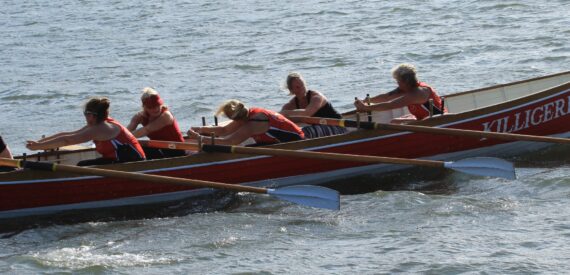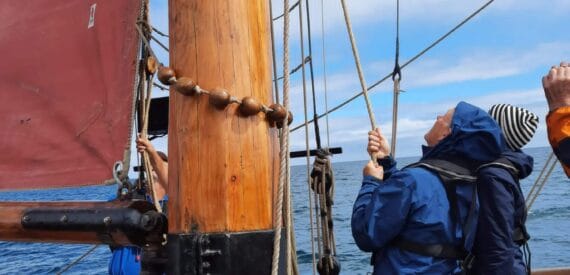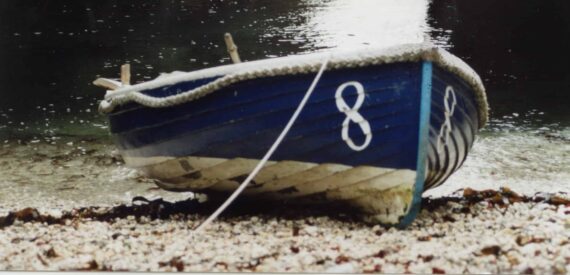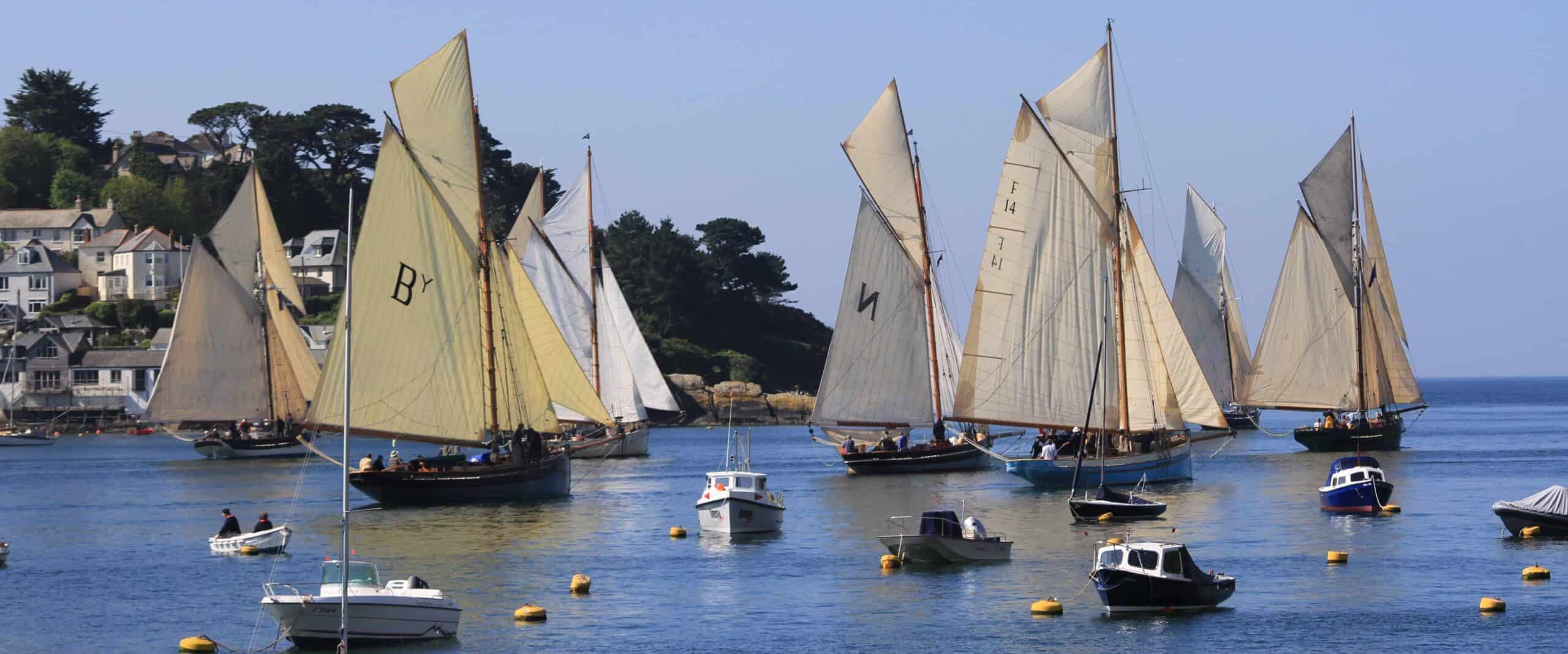
When you think of a ‘traditional’ sailing ship, many people will picture something from a Pirates of the Caribbean film. A big, old galleon with several billowing square-shaped sails flying one on top another. You may have noticed however that most of our Classic Sailing fleet (at the moment!) don’t quite fit that image. The majority of our ships are Gaff rigged. Gaff rigged sailing vessels, with their distinctive ‘4-cornered-but-triangular-shaped’ sails and rich history, have been an integral part of maritime culture for centuries. This style of rigging has evolved from older sail designs, each adaptation refining its performance and versatility. The gaff rig stands as a testament to the ingenuity of seafarers, and its impact on sailing is undeniable. In this article, we’ll take a peek at the fascinating world of gaff rigged vessels, exploring their evolution, unique features, and notable examples.
Of course we can’t write about gaffer’s without pointing you towards Tom Cunliffe’s brilliant book, ‘Hand, Reef and Steer’ and also the Association for Gaff Rig Sailing (OGA) for further reading and resources.
Evolution from Older Rigs
The gaff rig’s origins can be traced back through the centuries, emerging as a refinement of the older square rig and spritsail designs. It introduced the ‘gaff’, a wooden spar at the top of the sail extending diagonally from the mast, allowing for a larger sail area and improved control. This innovation enabled sailors to harness the wind more efficiently, enhancing manoeuvrability and overall performance.
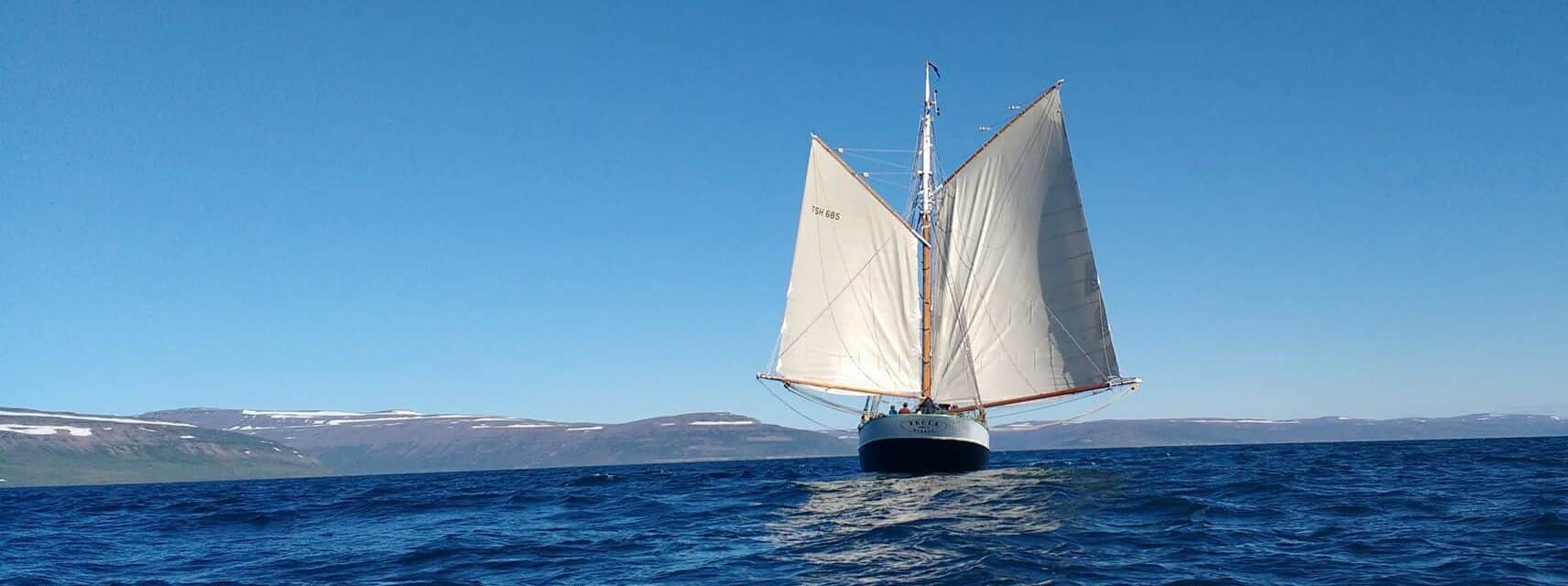
Differences from Square Rigged Ships
One key distinction between gaff rigged vessels and their square rigged counterparts is the positioning of the sails. Square rigs feature square-shaped sails that are attached perpendicular to the mast. Gaff rigged vessels utilise triangular sails suspended from the gaff. This configuration offers greater control over sail shape and allows for efficient tacking into the wind.
Advantages and Impact
The gaff rig’s ability to sail closer to the wind than square sailed ships was a revolutionary advancement in sail technology. This capability not only expedited voyages but also impacted global trade, exploration, and naval warfare. Gaff rigged vessels became favoured choices for coastal and short-haul journeys, as they could navigate shallow waters and challenging coastlines with agility.
Anatomy of a Gaff Sail
A typical gaff sail comprises several components, including the mast, gaff, boom, and various lines and ropes. The mast serves as the vertical support, while the gaff is the diagonal spar that supports the head of the sail. The boom, a horizontal spar attached to the foot of the sail, helps control the position and shape of the sail and manage its angle to the wind.
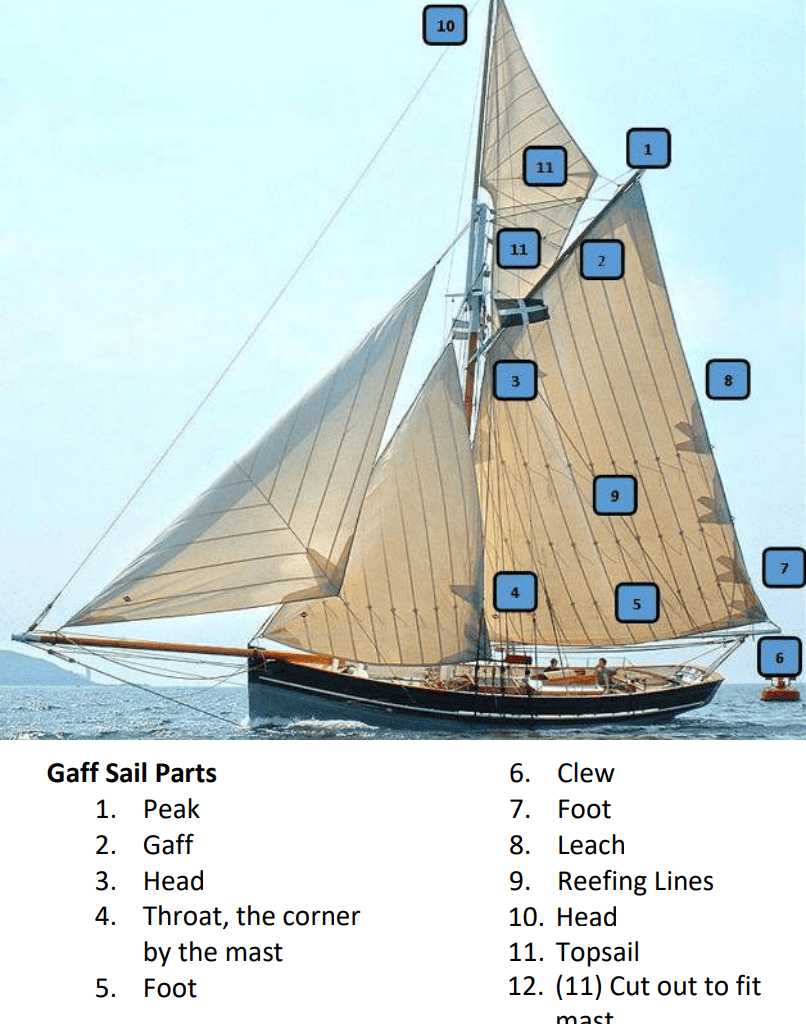
Multiple Halyards and Line Control
Gaff rigged vessels commonly employ two halyards instead of one. The throat halyard raises the forward end of the gaff, while the peak halyard raises the aft end. This dual halyard system offers greater control over the sail’s shape and tension. The gaff can be raised or lowered as needed, enabling adjustments for various wind conditions. There is a knack to raising a gaff sail. You may hear the mate or skipper asking for one of the halyards to hauled and the other held as you and your fellow sailiors are ‘sweating’ up the sail!

Gaffer’s in the Classic Sailing Fleet
Linden
Pilgrim
Provident
Santa Maria Manuela
Tallulah
Tecla
In conclusion, gaff rigged sailing vessels have a storied past that stretches back centuries. Evolving from older rig designs, gaff rigs introduced innovations that improved sailing performance and revolutionized maritime exploration and trade. As you explore the maritime world, keep an eye out for these majestic vessels and marvel at the legacy they carry.
.

